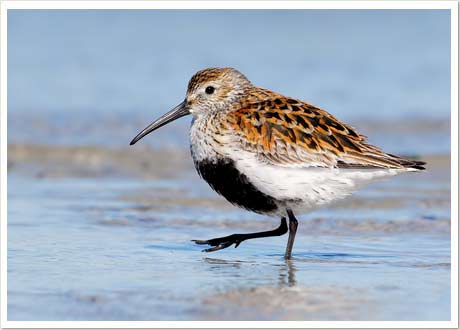|
| Dunlin |
PHOTO: 1 2 3 |
 |
|
 |
 |
| From October to April, Dunlins are the most common shorebird on Plymouth Beach. Like most other shorebirds, they migrate to the high Arctic to breed. Unlike most other shorebirds, Dunlins linger as far north as Nova Scotia. In fall and winter, you may see flocks of hundreds feeding on the beach's extensive sand flats. During the bitter cold of winter, Dunlins struggle to meet the high cost of keeping warm and must feed constantly-- searching for invertebrates with their tactile beaks. |
|
|